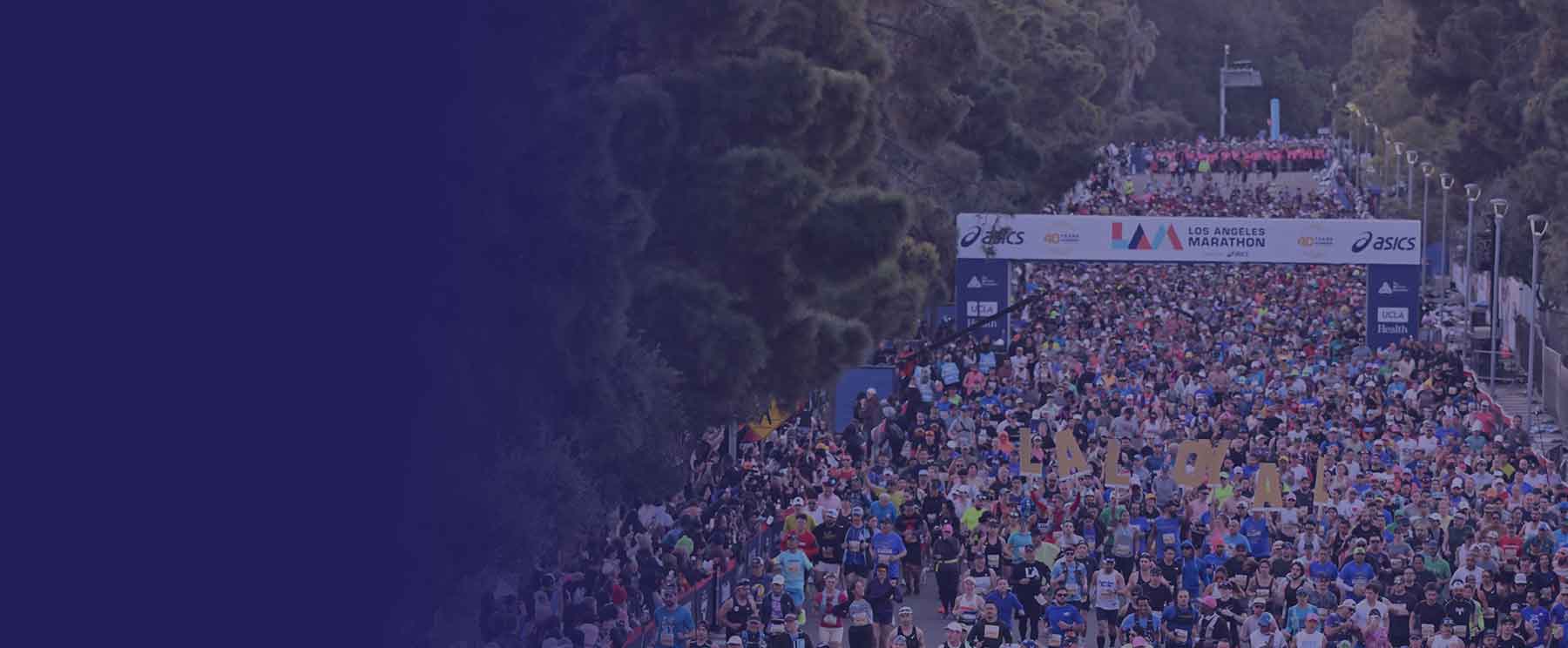
Community
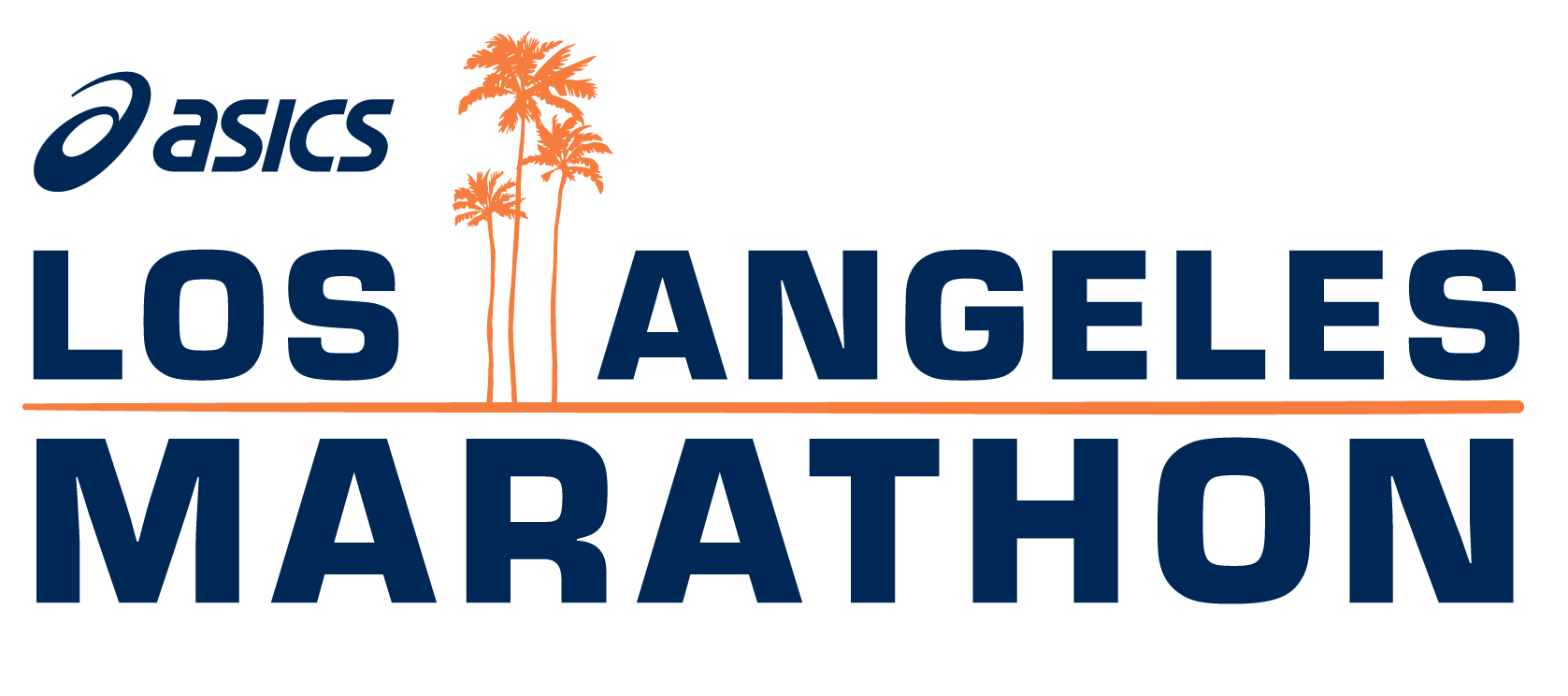
event title
ASICS Los Angeles Marathon
- ASICS Los Angeles Marathon
- Register
- Race Weekend Overview
- Distances & Courses
- Participant Info & Benefits
- Expo & Bib Pick Up
- Course Entertainment
- Finish Line
- Parking and Shuttles
- Travel & Hotel
- Charity Half Marathon
- Charity Info
- Community
- Athletes with Disabilities & Para Athlete Division
- Training
- LA Loyal
- Volunteer
- Partners
- FAQs & Rules
- Results
- Merchandise Store
Community
The ASICS Los Angeles Marathon is more than a marathon – we are a community of runners, walkers, joggers, charities, run clubs, volunteers, spectators and neighborhoods! Whether you've been participating in the Los Angeles Marathon since 1986 like our Legacy participants, you've volunteered once, or you like to cheer on those taking on 26.2, we see you, appreciate you, and look forward to seeing you in March!
Explore some of our communities below and don't forget to follow us on social @LAMarathon to interact with us more.
Below you'll find information on: Legacy Runners, Ambassador Program, Run Clubs, Party Pacers, Volunteers, Sustainability
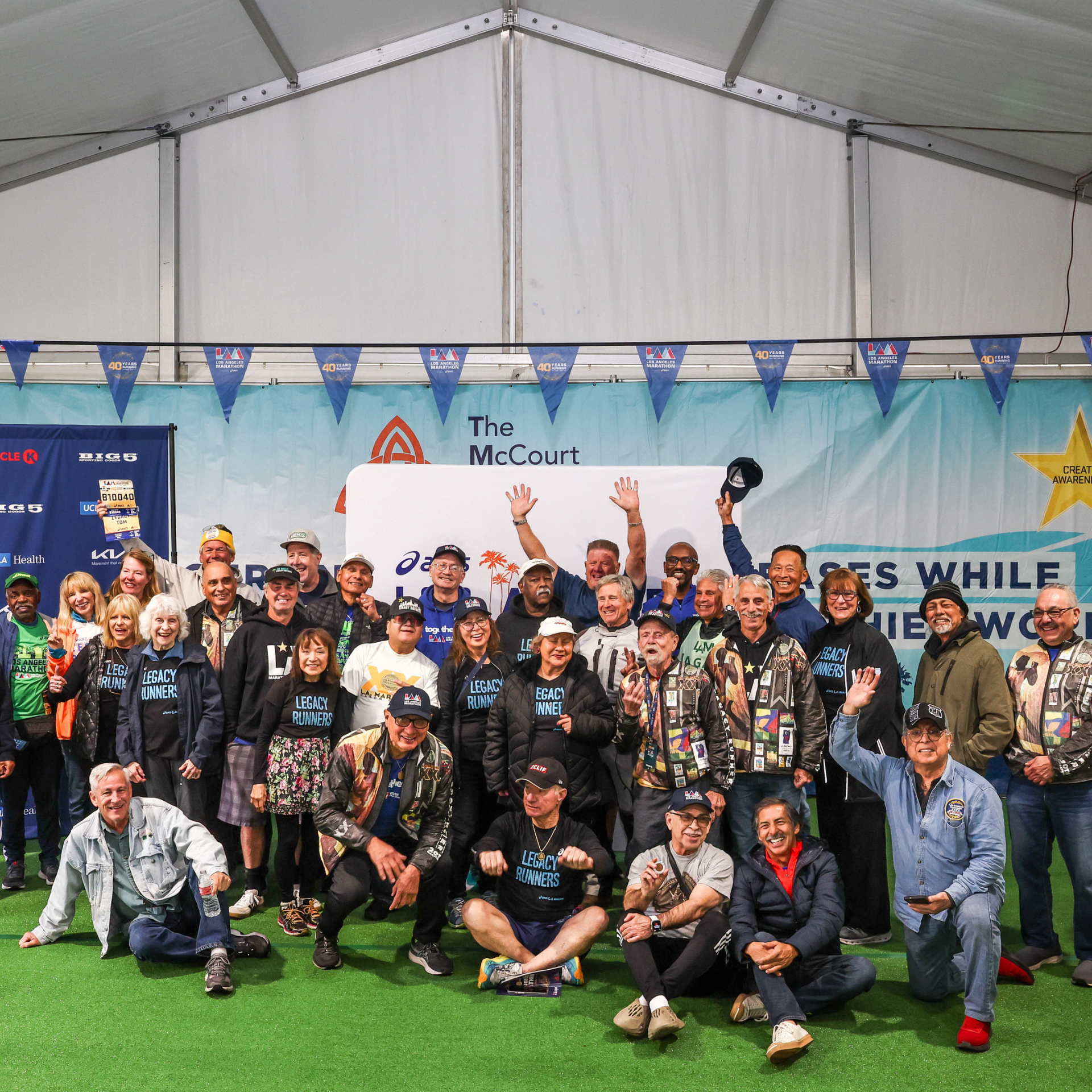
Legacy Runners
The Legacy Runners are an impressive group of men and women who have completed every Los Angeles Marathon since its inception in 1986.
In 2026, 86 people were eligible to step up to the start line.
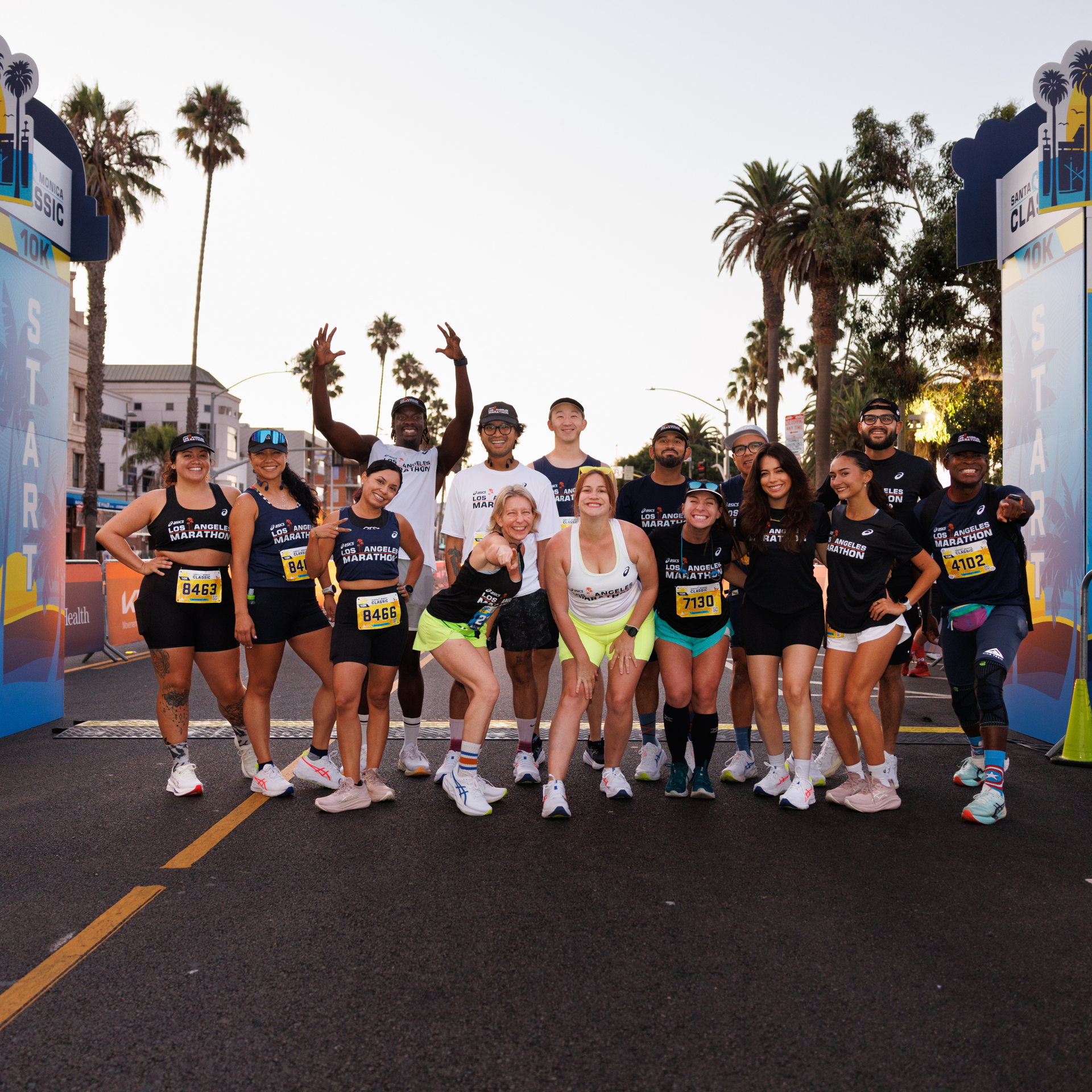
Ambassador Program
The 2026 ASICS Los Angeles Marathon Ambassador team helps inspire our community of runners, walkers, and fitness enthusiasts. They encourage beginner athletes, celebrate long-time participants, and tell the story of the race and the participants.

Run Clubs
At the ASICS Los Angeles Marathon, we are deeply inspired by the passion and commitment of our run club community. We’re dedicated to partnering with these incredible groups, providing them with resources and support as they train together and motivate each other to conquer the ASICS LA Marathon.
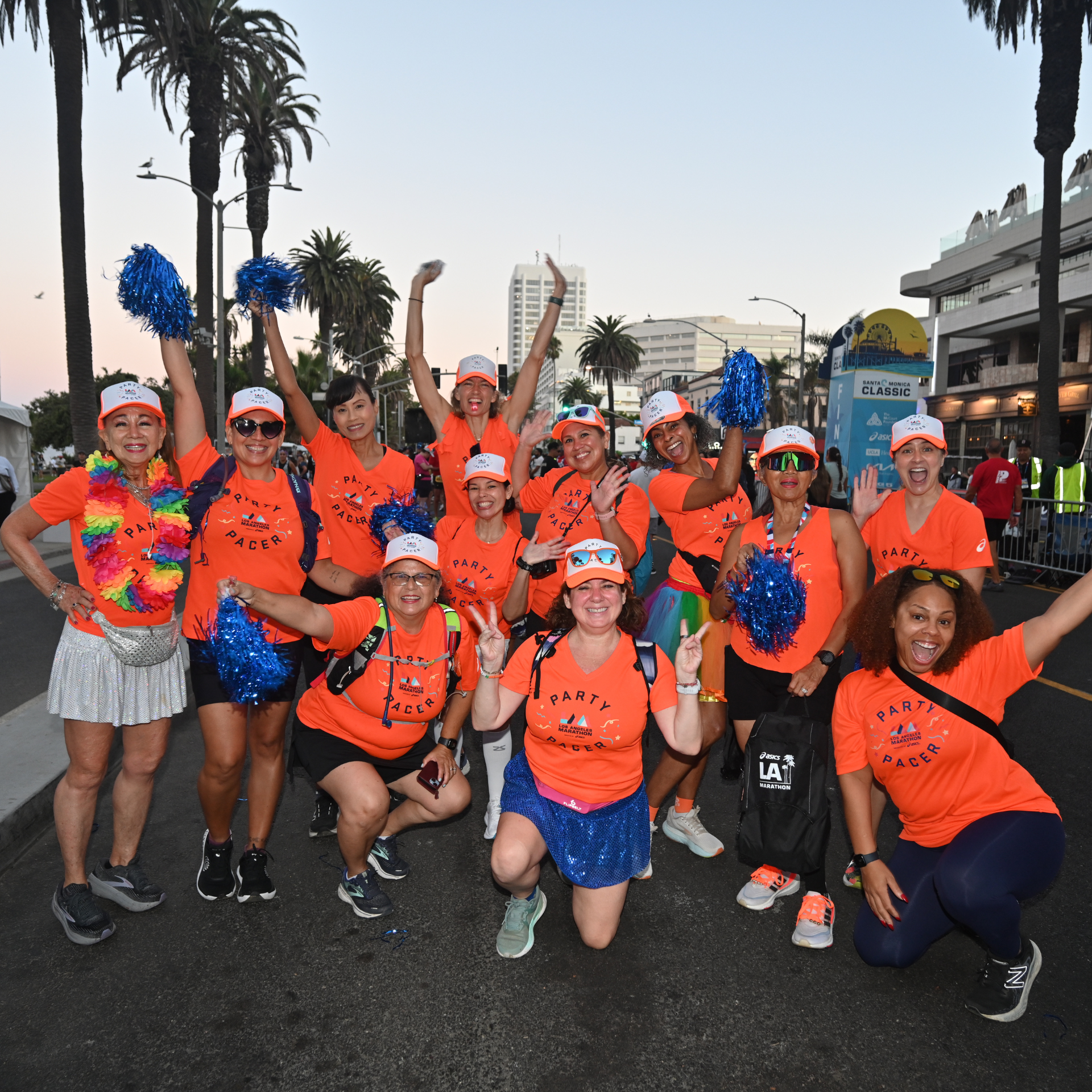
Party Pacers
Join the Party Pace Program and bring the party to the back of the pack! Launched in 2023, our Party Pacers are passionate and caring volunteers, dedicated to uplifting others at The McCourt Foundation events. They’re all about celebrating positive finishes, not just personal bests.
As part of our team, you'll be a first-class guide, helping others navigate the course, pointing out aid stations and landmarks, sharing words of encouragement, and spreading joy through high-fives and cheers.
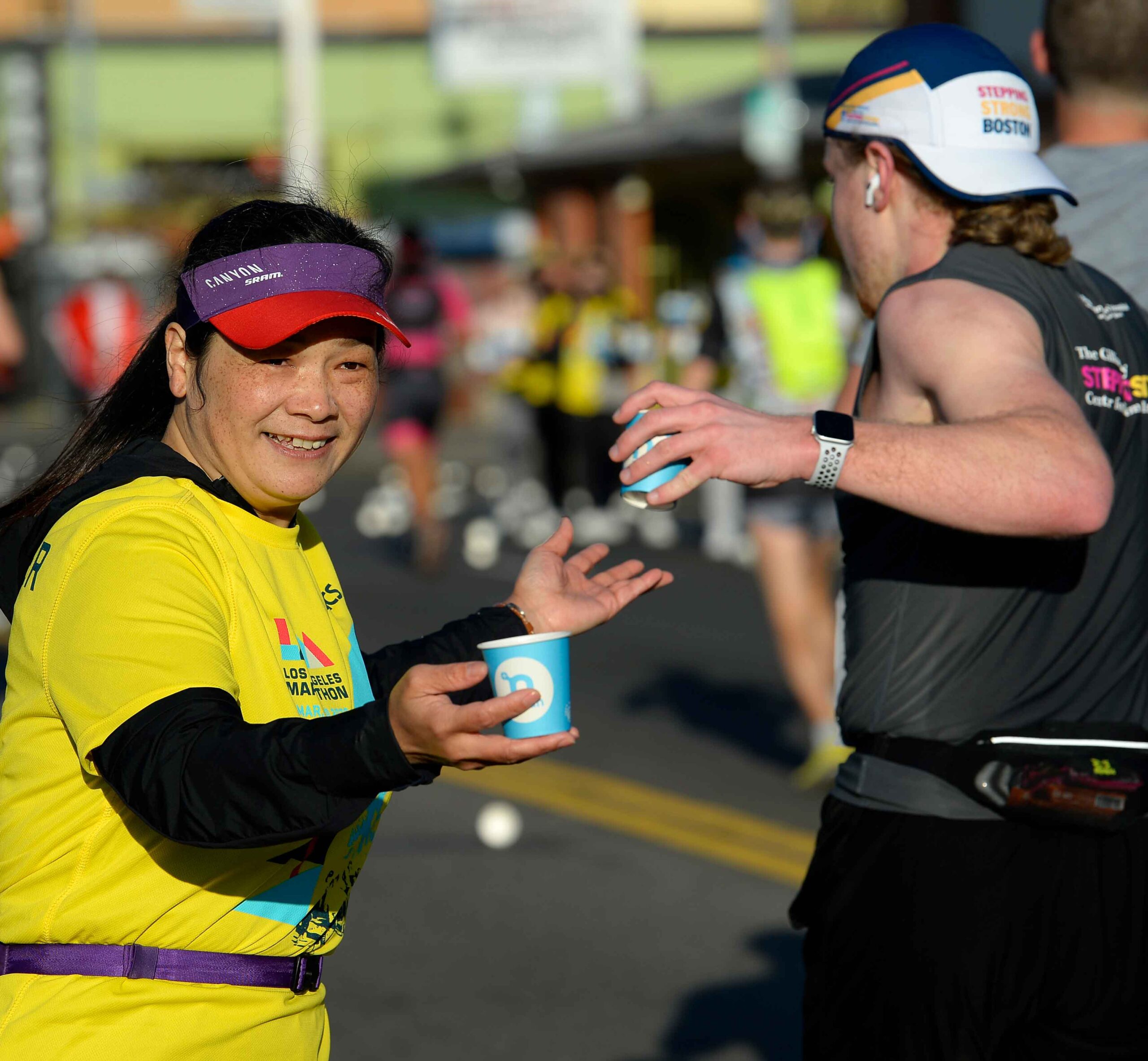
Volunteers
The ASICS Los Angeles Marathon is grateful for the thousands of people who show up year after year to volunteer. They show up early and stay until the end, helping no matter the weather. They embody the McCourt Foundation mission and we thank you!
If you’d like to volunteer for the ASICS Los Angeles Marathon click here.
If you’d like to volunteer for another event, click here.
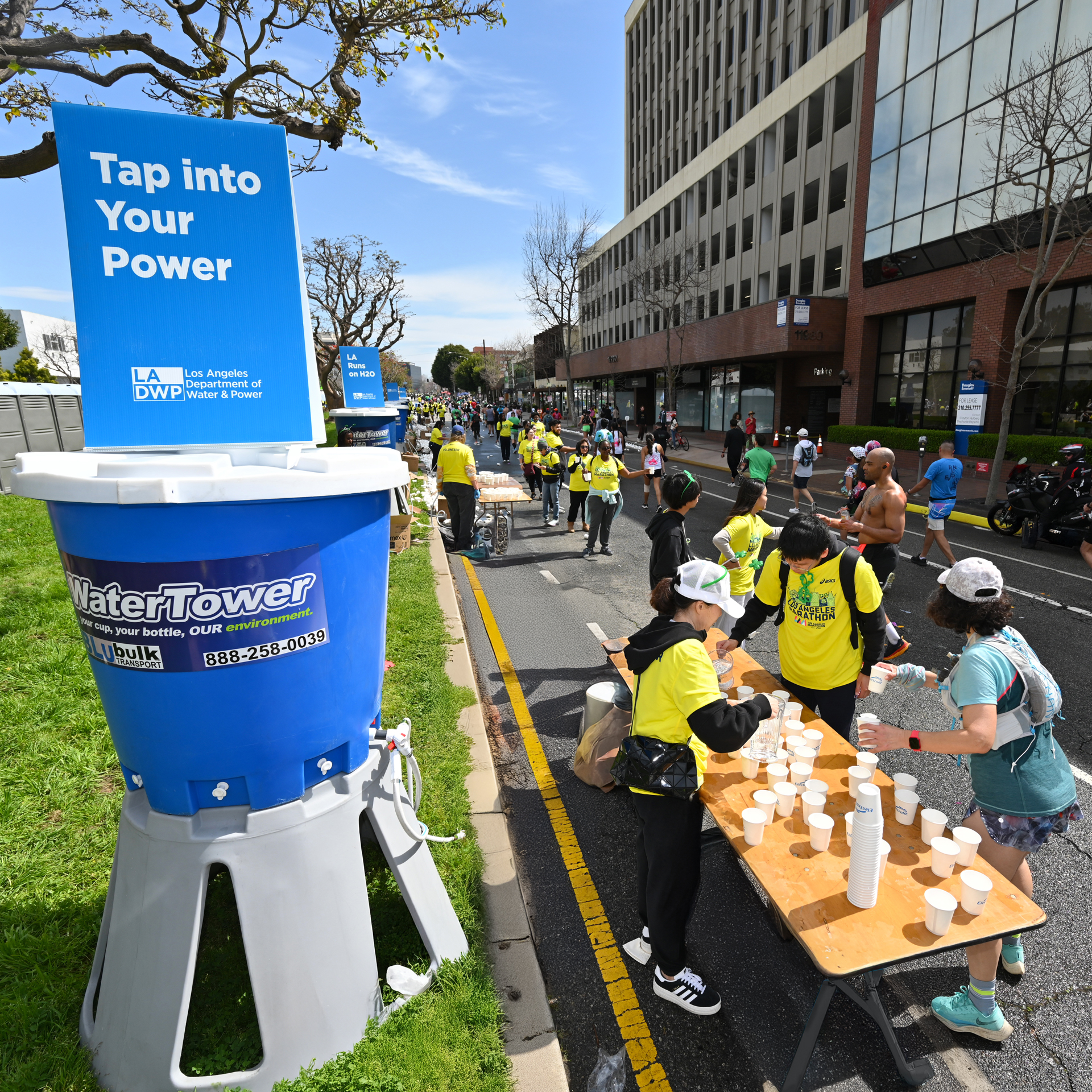
Sustainability
Join us at the ASICS Los Angeles Marathon to see how we are making a difference for the environment. We have earned the top sustainability award called Evergreen Certification and are committed to reducing waste, supporting local charities, using electric vehicles, and encouraging public transportation. Find out more about our sustainability efforts and how you can contribute to a greener marathon.